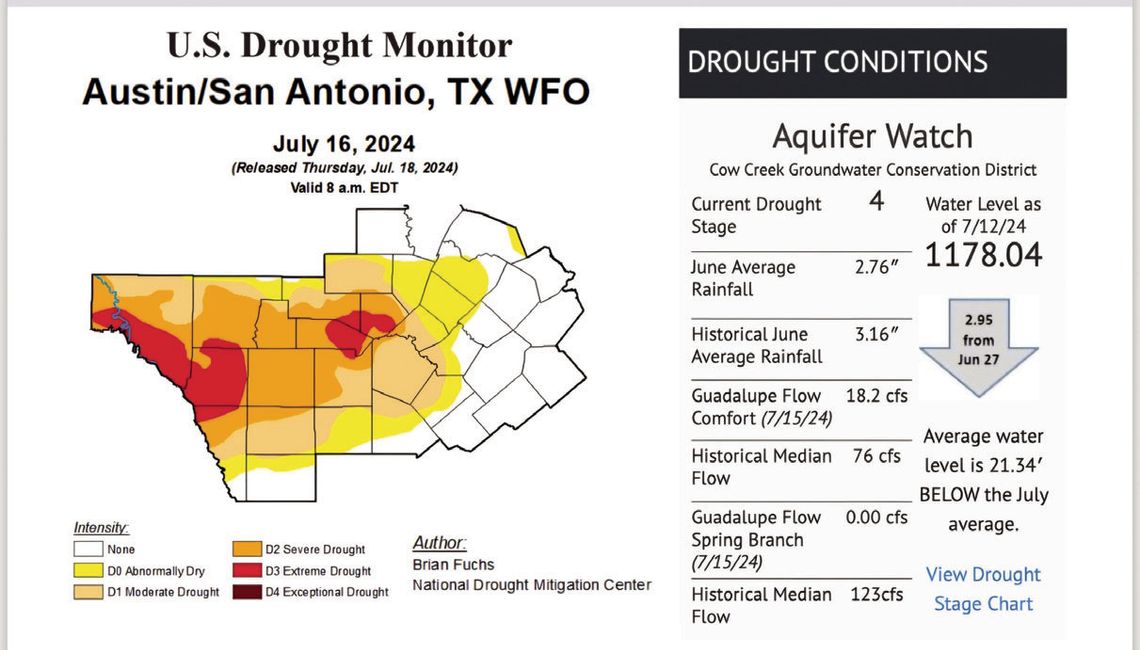GBRA monitoring Canyon Lake level; 15% cutback looms without lake rise
South Texas is no stranger to drought or the water use restrictions that come with it, but that does not mean a blind eye can be turned to the current drought that has plagued Boerne and the surrounding area since 2022.
The region suffered severe drought from September 2007 to June 2009, as the area experienced the driest 22-month period since record keeping began 1885, prompting policy reaction from water authorities and local governments which are now being updated.
The Guadalupe-Blanco River Authority (GBRA), The city of Boerne’s primary source of drinking water, met twice during the spring of 2024, both times revising the authority’s Drought Contingency Plan (DCP).
A change was presented in March 2024 that would affect all wholesale water buyers — cities, utilities, private companies — any district that buys raw water from GBRA. The list includes Boerne, Fair Oaks Ranch and San Antonio Water System (SAWS).
The proposed change is a mandatory wholesale sales reduction of 15% if the Canyon Reservoir water level is at or below 880 feet, which equates to being 49 percent full.
If the reservoir level falls to 865 feet, 31% full, the wholesale water sales reduction would increase, from 15 to 31%.
GBRA tracks the Canyon Reservoir level and current numbers show a 36.5 percent drop from June 2022, the reservoir going from 94.5% full to 58% full in mid-May 2024.
GBRA directors approve the drought contingency plan in May without objection.
Unless significant rainfall arrives this summer to bring inflows into Canyon Reservoir for a sufficient time, the first sales reduction could take effect before the end of 2024, stated Milan Michalec, Cow Creek Groundwater Conservation District board president in his 2024 “Regional Drought: A Short History and Present Situation” report.
According to “Water + Weather for June 2024,” by Dr. Mark Wentzel, a hydrologist at the Texas Water Development Board, drought is expected to expand in the Panhandle and West, Central, and North Texas. Improvements in South Texas were almost completely offset by degradations in Central and West Texas.
The GBRA would provide a 90-day heads-up to allow for restriction plan development and restriction monitoring. Non-compliance could result in enforcement being taken beginning with surcharges for excess use and, ultimately, physical restriction if necessary.
Due to the GBRA changes, the city’s Water Conservation Plan was recently updated in April with a Drought Management Ordinance. The ordinance includes specific details such as drought initiation and termination, drought response stages, outside watering days and penalties for violations.
A fourth source of water, the reclaimed water utility, is used for outdoor uses such as construction and dust control. It is currently limited by the cost of building the infrastructure to provide it to new customers.








Comment
Comments